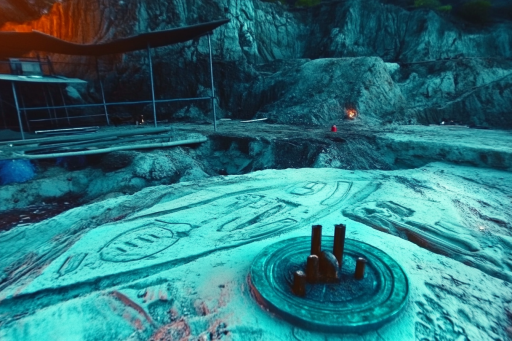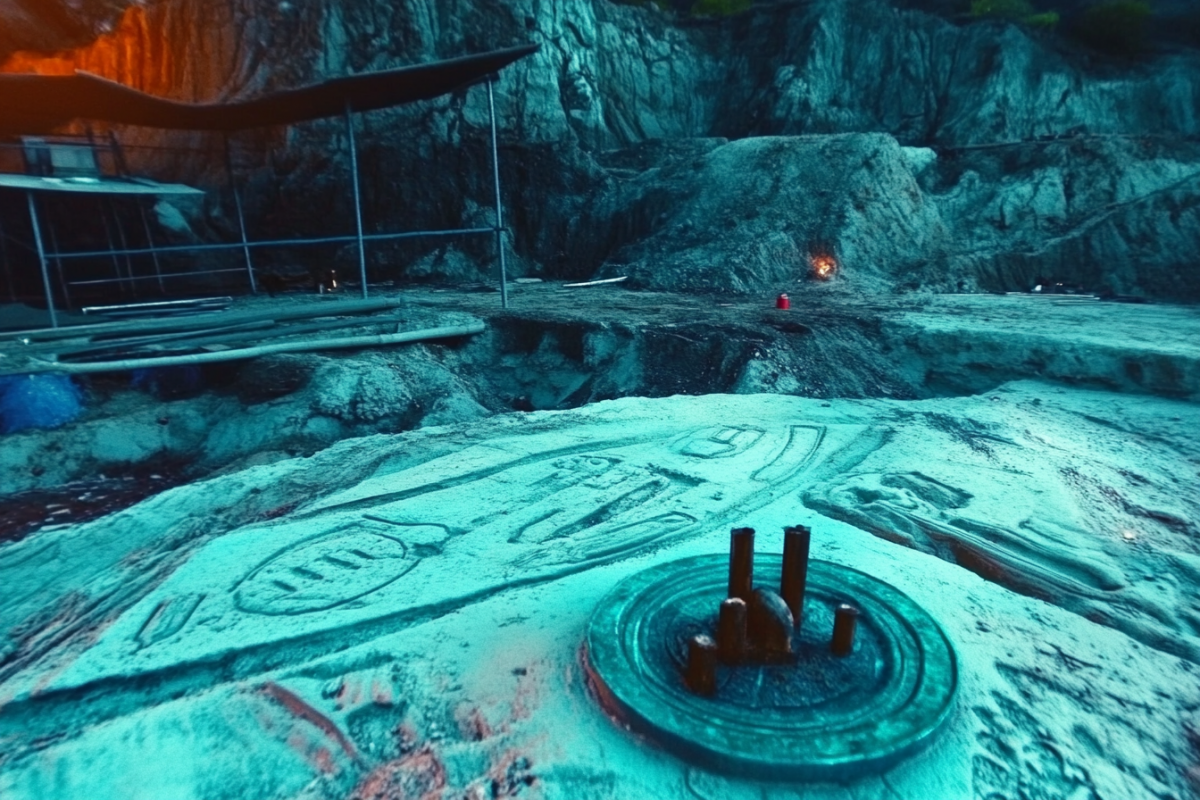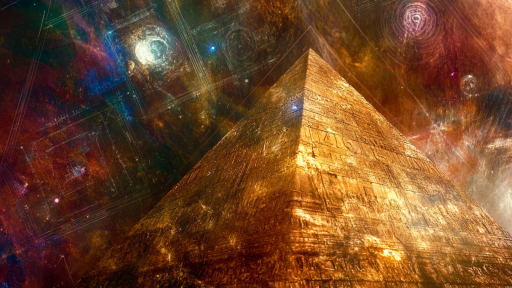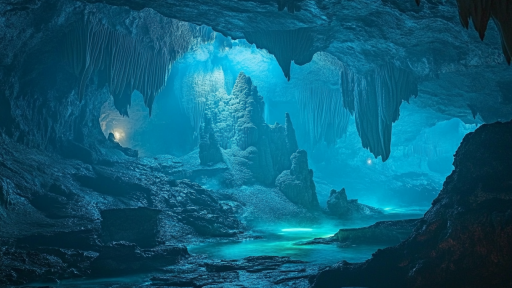
Some artifacts don’t just tell the story of the past—they hint at events that hadn’t happened yet. From ancient sculptures that resemble modern technology to texts that describe inventions centuries before they were created, these objects have baffled historians and scientists alike. Whether these artifacts are mere coincidences, forgotten knowledge, or glimpses into something more mysterious, they challenge our understanding of time itself. The question remains: how did people from long ago seem to predict the future so accurately?
The Antikythera Mechanism – The World’s First Computer

Discovered in an ancient shipwreck, the Antikythera Mechanism is a complex device made of gears and dials that eerily resembles modern mechanical computers. Dating back over 2,000 years, it was capable of predicting astronomical movements with astonishing precision. The level of sophistication suggests knowledge that shouldn’t have existed at the time. Some believe it was centuries ahead of its era, raising questions about lost technology.
The Baghdad Battery – An Ancient Power Source?

Found in Iraq, this clay jar with metal rods inside appears to function as a primitive battery. If filled with an acidic liquid, it could generate electricity—thousands of years before modern power sources were developed. The purpose of the artifact remains unknown, but its design closely resembles technology we use today. Could ancient civilizations have harnessed electricity long before we thought possible?
The Helicopter Hieroglyphs of Abydos

Carved into the walls of an ancient Egyptian temple, a series of hieroglyphs appear to depict modern vehicles, including helicopters, planes, and submarines. Some argue these are coincidences caused by erosion, while others believe they hint at lost knowledge—or even glimpses of the future. The resemblance to contemporary technology is too striking to ignore.
The Mayan Dresden Codex and Its Uncanny Predictions

The Dresden Codex, one of the oldest surviving Mayan books, contains mathematical and astronomical calculations that were centuries ahead of their time. It predicted solar and lunar eclipses with eerie accuracy, as well as planetary cycles we only confirmed with modern technology. How the ancient Maya gained such knowledge remains a mystery.
The Tombstone of a Time Traveler?

A gravestone from the 1800s in the U.S. has an engraving of what appears to be a modern wristwatch. Historians have no explanation for how such a detailed image of a futuristic object ended up on an old tombstone. While skeptics call it a coincidence, others wonder if it’s proof of knowledge that shouldn’t have existed yet.
The Piri Reis Map – A Glimpse of Antarctica Before Ice?

Drawn in the 1500s, the Piri Reis Map includes an accurate depiction of the Antarctic coastline—centuries before it was officially discovered. Even more baffling, the map appears to show Antarctica without ice, a detail that matches modern geological surveys. How did a medieval mapmaker know about a landmass hidden under ice for thousands of years?
The Saqqara Bird – An Ancient Flying Machine?

This small wooden artifact from an Egyptian tomb looks strikingly like an airplane, complete with wings and a tail. Some researchers suggest it was a simple toy, while others believe it might be evidence that ancient Egyptians had knowledge of aerodynamics. The resemblance to modern aircraft is uncanny, fueling speculation about lost technologies.
The Vishnu Astronaut – A Space Suit in Ancient India?

An ancient carving found in India depicts a figure that resembles a modern astronaut—helmet, breathing apparatus, and all. This sculpture is thousands of years old, yet its design matches futuristic space gear. Could this be an artistic coincidence, or did ancient cultures have knowledge of space travel long before modern science?
The 100,000-Year-Old Aluminum Object

A chunk of metal resembling modern aluminum machinery was found buried deep in Romania, in a layer of earth estimated to be 100,000 years old. Aluminum wasn’t discovered until the 19th century, making this artifact highly controversial. Some claim it’s proof of an unknown ancient civilization—or even extraterrestrial influence.
The Book That Predicted the Internet

In 1898, author Mark Twain wrote about a global communication network called the “telelectroscope.” It allowed people to access information from anywhere in the world, eerily foreshadowing the internet. Twain’s idea came decades before computers existed, raising the question of how he envisioned something so close to reality.
The Chinese “Ancient Telescope” That Shouldn’t Exist

A bronze artifact discovered in China appears to function like a modern telescope, despite being thousands of years old. Historians debate whether it was actually used for stargazing, but its design suggests an understanding of optics that predates conventional telescope development. Did ancient civilizations master astronomy far earlier than we realized?
The “Star Gate” of Sri Lanka

In the ancient city of Anuradhapura, Sri Lanka, a strange carving known as the Sakwala Chakraya resembles modern depictions of star maps and space travel. Some researchers believe it was a celestial map, while others suggest it represents portals to other worlds. Whether a product of advanced knowledge or pure symbolism, its futuristic design is hard to ignore.
The Land That Sinks and Rises Again

Some places on Earth disappear beneath the water, only to reemerge years or centuries later as if nothing happened. In the Gulf of Mexico, portions of land have sunk into the sea due to shifting tectonic plates, only to rise again over time. Similarly, ancient cities like Heracleion in Egypt have been swallowed by water, preserving their structures beneath the waves until they are uncovered again. This strange cycle of land disappearing and returning reminds us that Earth is constantly reshaping itself—sometimes in ways that make history vanish and then unexpectedly return.
A Timeline That Loops

Some objects seem to exist outside of time, hinting at knowledge and technology that shouldn’t have been possible. Are these coincidences, misinterpretations, or evidence of something we can’t yet explain? Whether ancient civilizations had access to advanced knowledge or we’re glimpsing traces of a reality we don’t fully understand, these artifacts leave behind more questions than answers. Perhaps history and the future are more connected than we ever imagined.





